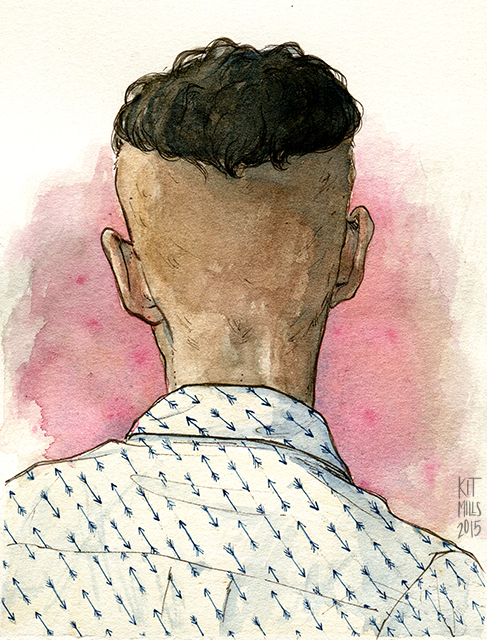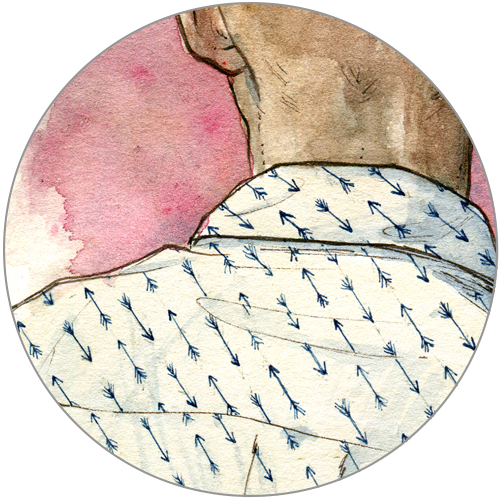 Which way?
Which way?
As a design element, arrows are both compelling and open to a variety of interpretations. They could mean that you know where you’re going. They could mean that you don’t know where you’re going. You are a weapon, or a direction. You might feel a spiritual connection between yourself and an object propelled at high speed until it hits a target. Maybe you’re into archery, or maybe you feel attacked and wish to shield yourself. They seem to be a popular element in branding designs from the past five years or so, so you could also just be a designer who is stuck in hipster logo go-to aesthetics.
From an historical perspective, the wearer of arrow-related iconography may also be communicating an affinity with St. Sebastian, the early Christian saint famous for dying a martyr lashed to a tree and porcupined with arrows. As the story goes, he actually survived this execution order from Roman emperor Diocletian and was nursed back to health by St. Irene, only to later be beaten to death and then tossed into a sewer. If that’s not an exciting series of images for a bunch of Renaissance painters to adopt and romanticize, I don’t know what is. The Renaissance interest in “rediscovering” the human form, classical Greco-Roman imagery, and dramatic storytelling through painting found an excellent subject in St. Sebastian. In turn, it’s not particularly surprising that a persecuted holy figure tied up, penetrated by arrows, and generally painted nude as a beautiful young man became something of a covert queer icon.

The potential subjects for painters to express eroticism around this time were pretty few and far between—wealthy patrons and clients frequently wanted saints and religious imagery and would probably frown upon their contract artist revealing a bunch of paintings of Catholic saints in sexually-charged states of undress. St. Sebastian’s tormented body, however, is part of his story as much as his near-death and resurrection and it’s no wonder male artists with same-sex leanings wanted to paint him. He is the patron saint of soldiers and athletes, traditional ideals of masculine physicality. He’s also the patron of plague-sufferers, which seems like a terrible act of prophecy when you consider the devastation of the queer population in the 80s and 90s from HIV/AIDS. Still, he’s also associated with deliverance from the plague, of and overcoming extreme adversity. As for his eventual fate… well, we all have to die sometime.
Follow The Art of Style by Kit Mills. For more of Kit’s work, check out their website.





